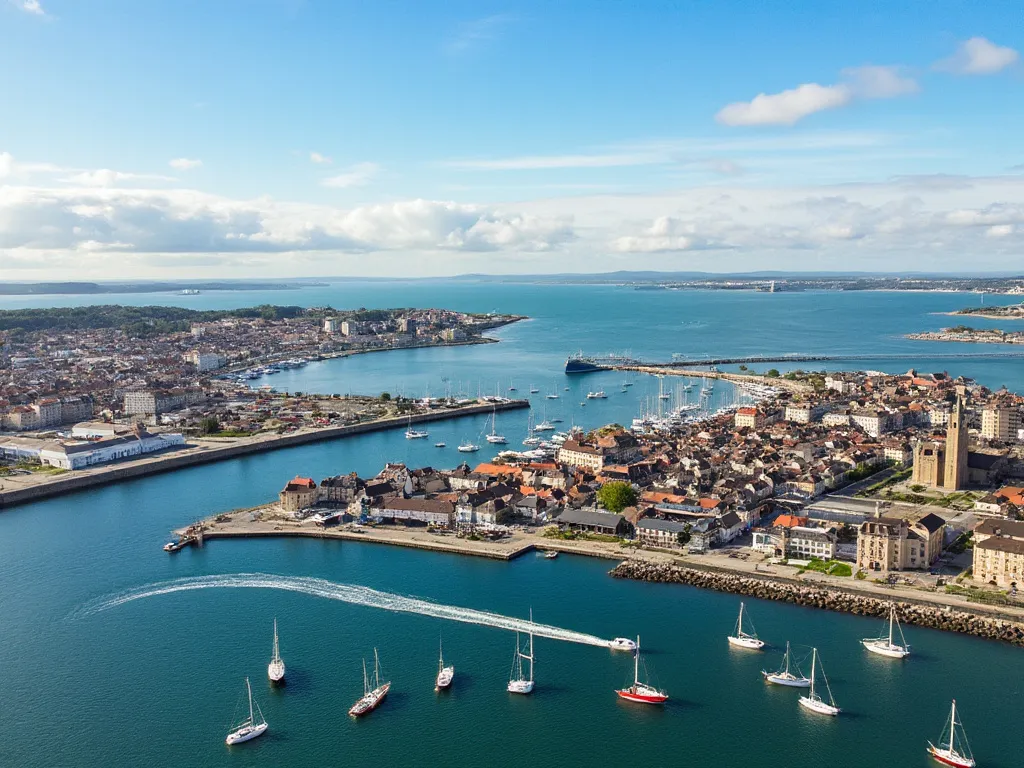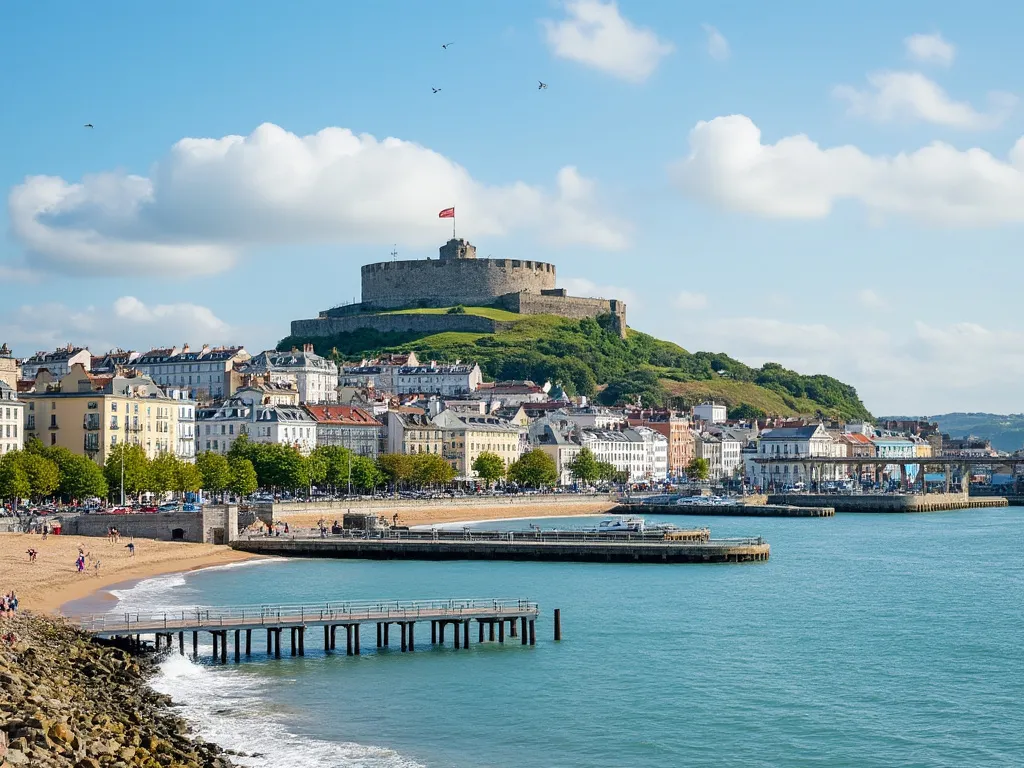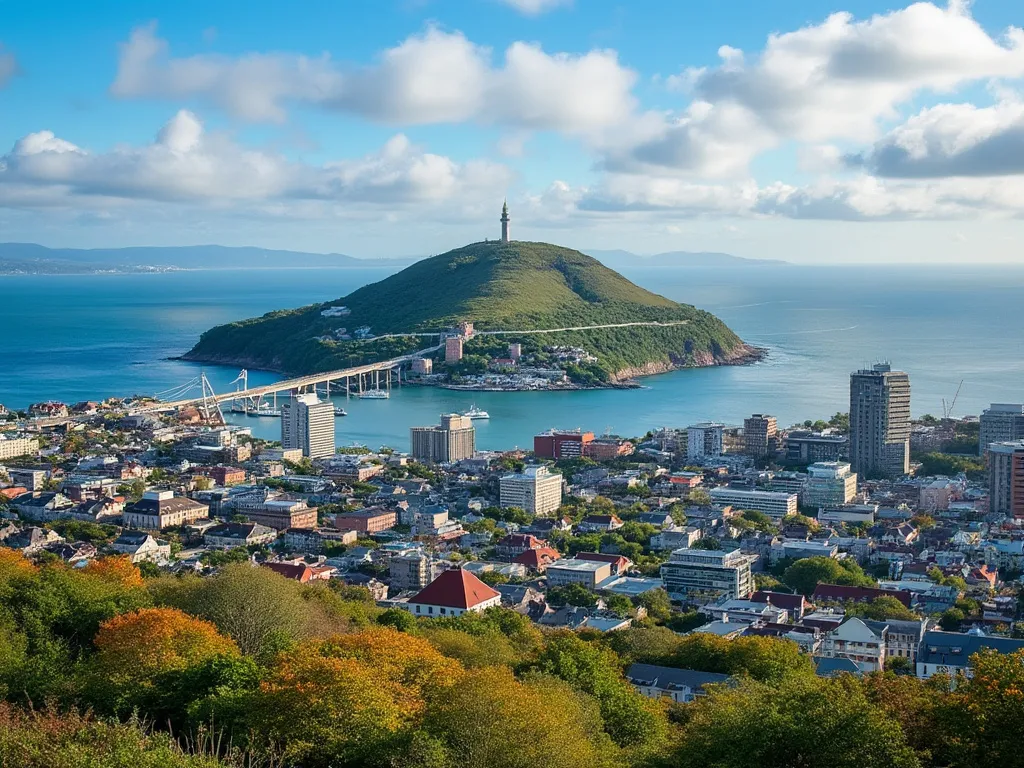
Saint-Pierre is the capital and largest town of the overseas collectivity of Saint Pierre and Miquelon, an archipelago in the North Atlantic Ocean. Located on the island of Saint-Pierre, the town has a rich history and culture shaped by its strategic position between North America and Europe.
Saint-Pierre information
| Country | 🇵🇲 Saint Pierre and Miquelon |
| Population | 5,509 (2020 estimate) |
| Coordinates | 46.7667° N, 56.1833° W |
| Area | 25 km² (9.7 sq mi) |
| Climate | Subpolar oceanic climate |
| Language | French |
| Currency | Euro |
| Time zone | UTC-3 (PMST) |
| Proximity to other major cities | Approximately 20 km (12 mi) southwest of Miquelon Island, 30 km (19 mi) northwest of Newfoundland, Canada |
Interesting facts about Saint-Pierre
- Saint-Pierre is the most populous town in Saint Pierre and Miquelon, accounting for approximately 90% of the archipelago's population.
- The town has a unique architectural style, with brightly colored wooden buildings and steeply pitched roofs.
- Saint-Pierre is home to the oldest continuously operating hospital in North America, the Saint-Pierre Hospital, which was established in 1886.
Tourist attractions in Saint-Pierre
- Saint-Pierre Museum: a museum showcasing the island's history, geology, and wildlife.
- Pointe aux Canons Lighthouse: a historic lighthouse offering stunning views of the Atlantic Ocean.
- Saint-Pierre Harbour: a picturesque fishing port and hub of the town's seafood industry.
- Ile aux Marins: a small island off the coast of Saint-Pierre, featuring a historic lighthouse and scenic views.
Historical background of Saint-Pierre
The area has been inhabited by indigenous peoples for thousands of years, but the first European explorer to visit the island was João Álvares Fagundes, a Portuguese explorer, in 1520. In the 17th century, the French established a colony on the island, and it became a major fishing port and supply center. During World War II, the town played a significant role as a Free French Forces base.
Geographical location of Saint-Pierre
Saint-Pierre is situated on a narrow peninsula on the northwest coast of Saint-Pierre Island. The town is surrounded by rugged coastline and scenic views of the Atlantic Ocean. The island's terrain is characterized by rocky shores, sandy beaches, and rolling hills.
Cultural significance of Saint-Pierre
Saint-Pierre is a culturally rich and diverse town, with a unique blend of French and North American influences. The town is home to several museums, including the Saint-Pierre Museum, which features exhibits on the island's history, geology, and wildlife. The town also hosts several festivals throughout the year, including the Saint-Pierre Festival, which celebrates the town's anniversary.
Economic importance of Saint-Pierre
The economy of Saint-Pierre is primarily driven by fishing, tourism, and services. The town has a significant fishing port, and the local economy benefits from the processing and export of seafood products. Tourism also plays a major role, with visitors attracted to the town's natural beauty, outdoor recreational opportunities, and cultural heritage.
Conclusion on Saint-Pierre
Saint-Pierre is a unique and captivating town that offers a blend of history, culture, and natural beauty. From its rich historical heritage to its stunning landscapes, the town is a must-visit destination for anyone interested in exploring the charms of Saint Pierre and Miquelon.
 Garapan
Garapan
 San José
San José
 Saint Helier
Saint Helier
 Saint John's
Saint John's